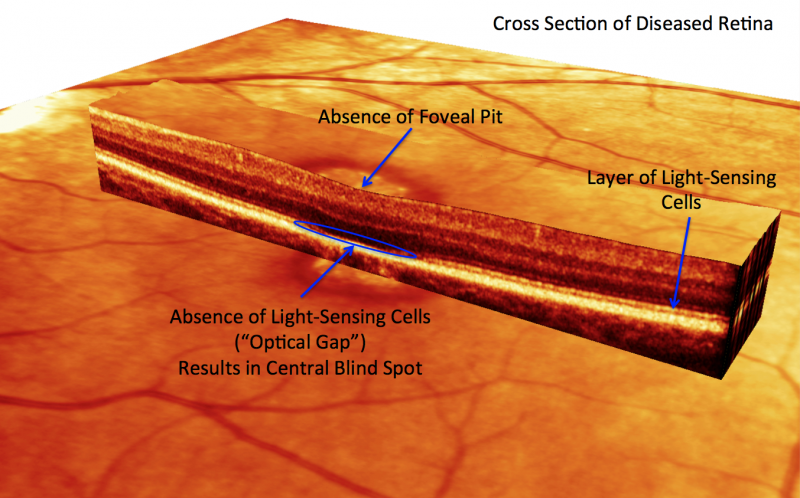New color blindness cause identified

A rare eye disorder marked by color blindness, light sensitivity, and other vision problems can result from a newly discovered gene mutation identified by an international research team, including scientists from Columbia University Medical Center (CUMC). The findings, which were published today in the online edition of Nature Genetics, could lead to new, targeted treatments for this form of color blindness.
The researchers found that mutations to a gene called ATF6, a key regulator of the unfolded protein response, can lead to achromatopsia, a hereditary visual disorder characterized by color blindness, decreased vision, light sensitivity, and uncontrolled eye movement in children.
The unfolded protein response is a mechanism cells use to prevent the dangerous accumulation of unfolded or mis-folded proteins.
Based on mouse studies, the researchers suspect that the cone cells of people with achromatopsia are not permanently damaged and could be revived by enhancing the pathway that regulates the unfolded protein response. 'Several drugs that activate this pathway have already been approved by the FDA for other conditions and could potentially benefit patients with achromatopsia,' said one of the study leaders, Stephen Tsang, M.D., Ph.D., who is the Laszlo Z. Bito associate professor of ophthalmology, and is affiliated with the Institute of Human Nutrition, at CUMC.
Dr. Tsang's innovative research continues to unfold the genetic basis for a variety of ocular diseases. This finding is an example of the finest clinically based science that will ultimately allow us to overcome preventable vision loss," said George A. Cioffi, MD, Edward S. Harness Chairman and Ophthalmologist-in-Chief at NewYork-Presbyterian Hospital/Columbia University Medical Center.
'Five genes had previously been linked to achromatopsia; however, they accounted for only about half of all cases,' said Tsang. 'Using next-generation gene sequencing on a small group of patients, we found that mutations in a sixth gene—ATF6—can independently lead to the disease.'

Tsang is also associate professor of pathology and cell biology at CUMC and an attending physician at New York-Presbyterian Hospital.
Mutations in ATF6 (activating transcription factor 6A) have been implicated in other conditions, including diabetes and Alzheimer's disease models, but this is the first time that they have been directly linked to human disease.
Achromatopsia, famously described by Oliver Sacks in his book 'Island of the Colorblind,' affects an estimated one in 30,000 people worldwide. It is a disorder of the retina's cone cells, which provide vision in daylight, including color vision. Rod cells, which provide vision in dim light, are unaffected. There is currently no effective treatment for the disease, which appears in infancy and typically does not progress. Ophthalmologists prescribe specially-filtered dark glasses or red-tinted contact lenses to reduce light sensitivity and with the intention of improving visual acuity.
The new mutations were initially identified by sequencing the exomes (protein-coding portions of the genome) of three children with achromatopsia who receive their care at NYPH. None of the children had mutations in the five known achromatopsia genes. ATF6 mutations were subsequently observed in 15 achromatopsia patients from nine other families in the study. All of the patients were found to have significant fovea hypoplasia (an underdevelopment of the macula, the center of the retina), a characteristic not commonly seen in other achromatopsia patients.
By analyzing skin cells from achromatopsia patients and their unaffected family members, the researchers confirmed that the ATF6 mutations were interfering with the signaling pathway that regulates the unfolded protein response. Surprisingly, the patients had no other ATF6-related abnormalities. 'ATF6 is found in every cell of the body, but for some reason only the cone cells were affected,' said Tsang.
The researchers estimate that ATF6 mutations account for only about one percent of cases of the disease. 'As we sequence more and more achromatopsia patients, we're likely to identify other genes,' said Tsang. 'I think the important lesson of this study is that it demonstrates how advanced technologies are bringing precision medicine to the field of ophthalmology. Certain diseases may look the same based on the clinical diagnosis, but we're finding that each patient is a little bit different and may benefit from a personalized approach to treatment.'

















